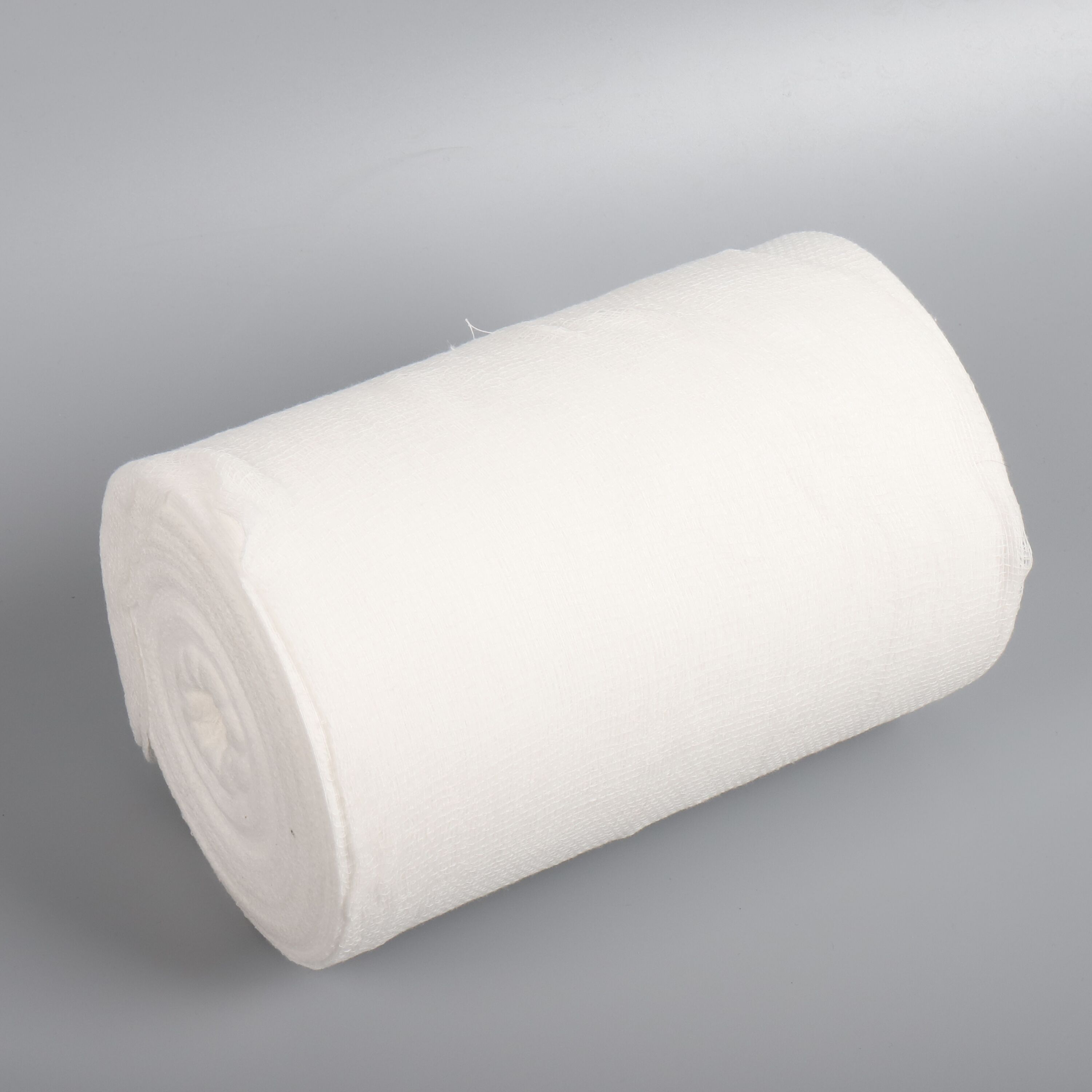ຄວາມສະດວກທີ່ດີເລີດ ແລະ ປະສິດທິພາບໃນການປະຢັດເວລາ
ຜ້າປູທີ່ນອນຖິ້ມຫຼັງໃຊ້ປະສົບການປະສິດທິພາບໃນການດຳເນີນງານໂດຍການຂຈັດວົງຈອນລ້າງຜ້າທີ່ເຄີຍໃຊ້ເວລາ ແຮງງານ ແລະ ຊັບພະຍາກອນຫຼາຍໃນການນຳໃຊ້ທັງໃນເຂດພາກພຶ້ນແລະສ່ວນຕົວ. ຄວາມສະດວກສະບາຍນີ້ບໍ່ໄດ້ຢຸດຢູ່ການຖິ້ມຫຼັງໃຊ້ເທົ່ານັ້ນ, ແຕ່ຍັງລວມເຖິງການຈັດການສິນຄ້າໃນສະຕັອກຢ່າງມີລະບົບ, ການຫຼຸດຜ່ອນພື້ນທີ່ເກັບຮັກສາ, ແລະ ຂຈັດລະບົບການບຳລຸງຮັກສາທີ່ຊັບຊ້ອນອັນເປັນພາລະໃນລະບົບຜ້າປູທີ່ນອນແບບດັ້ງເດີມ. ສະຖານທີ່ຕ່າງໆສາມາດຫຼຸດຜ່ອນຈຳນວນພະນັກງານທີ່ຕ້ອງການໃນການຊັກຜ້າໄດ້ຢ່າງຫຼວງຫຼາຍ, ໂດຍການນຳໃຊ້ແຮງງານໃນກິດຈະກຳຫຼັກຂອງທຸລະກິດ ໃນຂະນະທີ່ຍັງຮັກສາມາດຕະຖານຄວາມສະອາດທີ່ດີກວ່າຜ່ານຜ້າປູທີ່ນອນຖິ້ມຫຼັງໃຊ້. ການປະຢັດເວລານີ້ມີຄຸນຄ່າເປັນພິເສດໃນສະພາບແວດລ້ອມທີ່ມີການປ່ຽນແປງຫ້ອງຢ່າງໄວວາ ເຊັ່ນ: ໂຮງໝໍ, ໂຮງແຮມ ແລະ ສະຖານະການຮັບມືກັບເຫດສຸກເສີນ ບ່ອນທີ່ການກຽມພ້ອມຫ້ອງຢ່າງໄວວາມີຜົນກະທົບໂດຍກົງຕໍ່ຄວາມສາມາດໃນການໃຫ້ບໍລິການ ແລະ ການສ້າງລາຍຮັບ. ການຕັ້ງຄ່າກາຍເປັນສິ່ງທີ່ເກີດຂຶ້ນທັນທີ, ຕ້ອງໃຊ້ພຽງບໍ່ຫຼາຍກວ່າບໍ່ກີ່ສາມວິນາທີໃນການກະຈາຍ ແລະ ວາງຜ້າປູທີ່ນອນຖິ້ມຫຼັງໃຊ້ໃໝ່ ເມື່ອປຽບທຽບກັບຂະບວນການດົນນານຂອງການເກັບ, ລ້າງ, ແຫ້ງ, ພັບ ແລະ ຈັດຈໍາໜ່າຍຜ້າປູທີ່ນອນແບບດັ້ງເດີມ. ປະສິດທິພາບນີ້ຈະເພີ່ມຂຶ້ນໃນຂະບວນການຂະໜາດໃຫຍ່ທີ່ມີຮ້ອຍຄັນຂອງຕຽງທີ່ຕ້ອງການການດູແລທຸກໆວັນ, ສ້າງການປະຢັດຄ່າແຮງງານຢ່າງຫຼວງຫຼາຍ ແລະ ການຈັດການຂະບວນການທີ່ດີຂຶ້ນ. ສະຖານະການກຽມພ້ອມຮັບມືກັບເຫດສຸກເສີນໄດ້ຮັບປະໂຫຍດຢ່າງຫຼວງຫຼາຍຈາກຄວາມສະດວກນີ້, ເນື່ອງຈາກຜ້າປູທີ່ນອນຖິ້ມຫຼັງໃຊ້ບໍ່ຕ້ອງການການກຽມພ້ອມລ່ວງໜ້າ, ອຸປະກອນພິເສດ, ຫຼື ການສະໜັບສະໜູນດ້ານພື້ນຖານໂຄງລ່າງໃນການນຳໃຊ້ຢ່າງມີປະສິດທິພາບໃນຊ່ວງເວລາວິກິດການ. ອຸທົກໄພ, ການລະບາດຂອງພະຍາດ, ແລະ ເຫດສຸກເສີນພາຍໃນສະຖານທີ່ຕ້ອງການວິທີແກ້ໄຂດ້ານທີ່ນອນທີ່ທັນທີ ໂດຍບໍ່ມີເວລາໃຫ້ເສຍກັບຂະບວນການຊັກຜ້າແບບດັ້ງເດີມ. ການຫຸ້ມຫໍ່ທີ່ກົດແໜ້ນຊ່ວຍໃຫ້ສາມາດຂົນສົ່ງ ແລະ ຈັດຈໍາໜ່າຍໄດ້ຢ່າງໄວວາ, ໃຫ້ອົງການຊ່ວຍເຫຼືອສາມາດສ້າງສະຖານທີ່ພັກຊົ່ວຄາວດ້ວຍຄວາມຊັບຊ້ອນດ້ານຈັດການໜ້ອຍທີ່ສຸດ. ການນຳໃຊ້ໃນດ້ານສ່ວນຕົວກໍສະແດງໃຫ້ເຫັນເຖິງຂໍ້ດີດ້ານຄວາມສະດວກຄ້າຍຄືກັນ ສຳລັບນັກເດີນທາງ, ຜູ້ທີ່ມັກການນອກບ້ານ, ແລະ ບຸກຄົນທີ່ຕ້ອງການວິທີແກ້ໄຂດ້ານທີ່ນອນຊົ່ວຄາວ ບ່ອນທີ່ບໍ່ມີສິ່ງອຳນວຍຄຳດ້ານການຊັກຜ້າ ຫຼື ມີຄວາມບໍ່ໝັ້ນຄົງ. ການຂຈັດການເກັບຜ້າເປື້ອນ, ການຊອກຫາສິ່ງອຳນວຍຄຳດ້ານການຊັກຜ້າທີ່ເໝາະສົມ, ຫຼື ການປັບປ່ຽນເວລາເດີນທາງເພື່ອຊັກຜ້າ ສ້າງຄວາມເສລີພາບ ແລະ ຄວາມຍືດຫຍຸ່ນທີ່ບໍ່ເຄີຍມີມາກ່ອນໃຫ້ແກ່ວິຖີຊີວິດທີ່ມີການເຄື່ອນຍ້າຍ. ການຮັບປະກັນຄຸນນະພາບກາຍເປັນສິ່ງງ່າຍຂຶ້ນ ເນື່ອງຈາກຜ້າປູທີ່ນອນຖິ້ມຫຼັງໃຊ້ແຕ່ລະຜື້ນແມ່ນເປັນສິ່ງທີ່ຮູ້ຈັກດີ ດ້ວຍຄຸນລັກສະນະການປະຕິບັດງານທີ່ສອດຄ່ອງກັນ, ຂຈັດການຄາດເດົາທີ່ກ່ຽວຂ້ອງກັບສະພາບຂອງເນື້ອຜ້າ, ປະສິດທິຜົນຂອງການຊັກ, ຫຼື ການປົນເປື້ອນທີ່ອາດເກີດຂຶ້ນ ອັນສາມາດມີຜົນກະທົບຕໍ່ຄວາມນ່າເຊື່ອຖືຂອງຜ້າປູທີ່ນອນແບບດັ້ງເດີມ.



